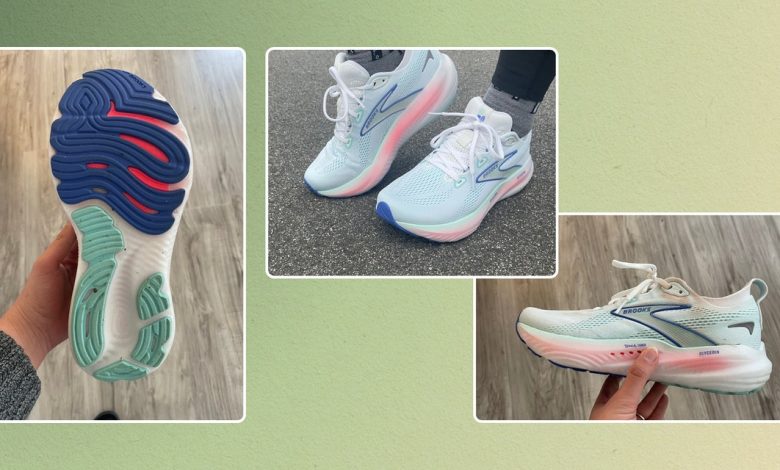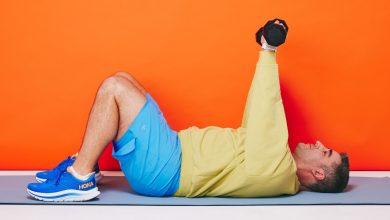The New Brooks Glycerin 22 Is a Picky Runner’s Dream

With so many options to choose from, shopping for running shoes can bring up some surprisingly existential questions. Am I a “max cushioning” person—someone who values comfort, possibly over performance? Or do I care more about running fast, even if it means my feet don’t feel quite as cradled as they could?
Usually, all of this soul-searching leads me to settle for one everyday sneaker that’s missing some of my must-haves, or to spend extra on two pairs to rotate through. Enter Brooks’s Glycerin 22 ($165, brooks.com), the newest update to an already-beloved shoe. To see if this latest version measures up to the previous ones, I put the 22 to the test. What I discovered? Thanks to some seriously inventive tech, the Glycerin 22 is kinda like two shoes in one—let me explain.
The design
When you see a number like 22 next to the name of a shoe, you know it’s been around for a while (and usually, there’s a good reason why). The Glycerin is one of Brooks’s most popular models. It’s a neutral running shoe, meaning it doesn’t have any extra stability features for those who overpronate, but it does pack a great deal of cushioning. If Brooks’s classic Ghost line is like a trusty Honda Civic, then the Glycerin is more like a Cadillac, with its ultra-thick padding and smooth ride, Caroline Bermel, product marketing specialist and head shoe tester at Fleet Feet, tells SELF.
Like its predecessor, the Glycerin 21—a 2024 SELF Sneaker Award winner—the 22 has a comfortable knit upper, a 10-millimeter heel-to-toe drop, and a grippy rubber outsole that looks as though it’ll last a long time.
The Brooks Glycerin 22 (top) compared to the previous model, the Brooks Glycerin 21 (bottom).
Original photo by SELF writer Lauren Wingenroth
The Glycerin 22’s outsole.
Original photo by SELF writer Lauren Wingenroth
Most important is the “DNA Tuned” midsole, which is made with a nitrogen-infused foam. Brooks has been injecting nitrogen into its shoes’ midsoles for several years now—the brand says it gives their sneaks an energy boost while also making them lighter.
This time around, Brooks “tuned” those nitrogen injections to meet the needs of different parts of the shoe. There are bigger nitrogen cells in the Glycerin 22’s heel for a plusher, softer feel, while smaller cells in the forefoot are firmer and more responsive. Since most runners strike the ground with their heels first, the sneaker is designed to absorb more shock in the back and provide a firmer push-off in the front to get you off the ground quickly. It’s a real Hannah Montana, best-of-both-worlds situation.
This isn’t the first Brooks model with DNA Tuned foam—that was the Glycerin Max, which came out last year. But I believe the 22 does it better (as I soon found out on my test runs).
The Brooks Glycerin 22 (top) compared to the Brooks Glycerin Max (bottom).
Original photo by SELF writer Lauren Wingenroth



